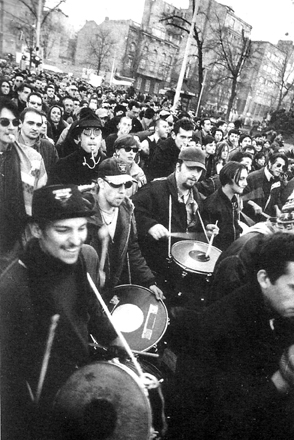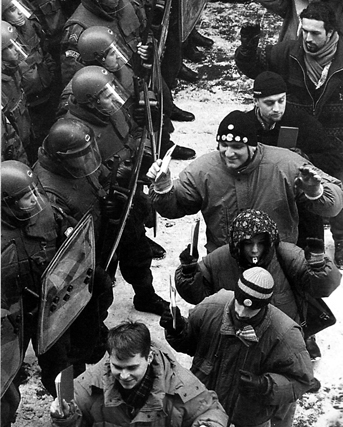People on the Square
Aleksandra Dulic: Concept, animation; Music, animation: Vladimir Sojic;
Organization: Nadja Bobic; Aleksandra Dulic, Jasna Blazencic, Gordana Zivkovic: Sculptures
Public Installation and animated video
Preseted at
45th Yugoslav Festival of Short Film, Belgrade, awarded Gold medal for animation;
TV Broadcast: Metropolis TV, Art TV,
Dedicated to the demonstration, Jasna Blazencic, Gordana Zivkovic and myself constructed an installation People on the Square, consisting of 30 sculptures of life size human models made from tape moulds. Positioned in Republic Square, site of the main demonstrations, the figurative group of shadows commemorated and questioned the impact of our involvement.
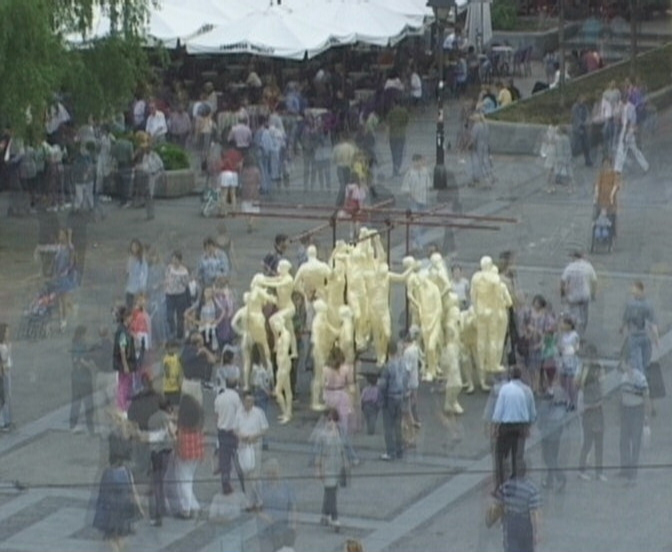
My work prior to coming to Canada was linked to the specific situation of war and unease in Yugoslavia. The government of Yugoslavia had made a series of poor political decisions that led to the isolation and collapse of the country, using all available media to justify its actions. Within this atmosphere, very little space was left for the individual to express a difference of opinion. Here, an interesting new culture emerged in which the street became the centre of community and action. It was within that environment that I emerged as an artist and painter, and discovered the transformational power of art. This environment encouraged the more interdisciplinary approach to painting, where the artistic methods needed to accommodate the independent art production that moved beyond the art galleries and onto the street.
One of the collaborative works I created in that environment is the installation People on the Square comprised of a series of life-size, transparent molds of the friends I spent three months with on the street, during the protests of 1996.
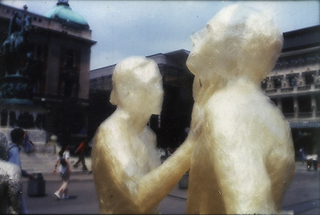
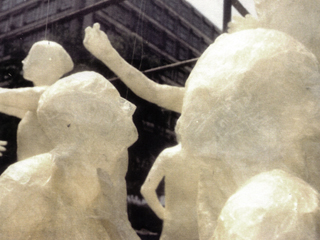

Placed in Belgrade's central square as a reconstruction of our actions, People on the Square was left to mark our presence in the space. Although, at that time, the political effects of the demonstrations were few, the seeds of a larger movement had been sown - developments in the practice of technology served to circumvent existing media structures and built a new cultural infrastructure and central force in theem erging street culture that developed in this era of massive political demonstrations.
